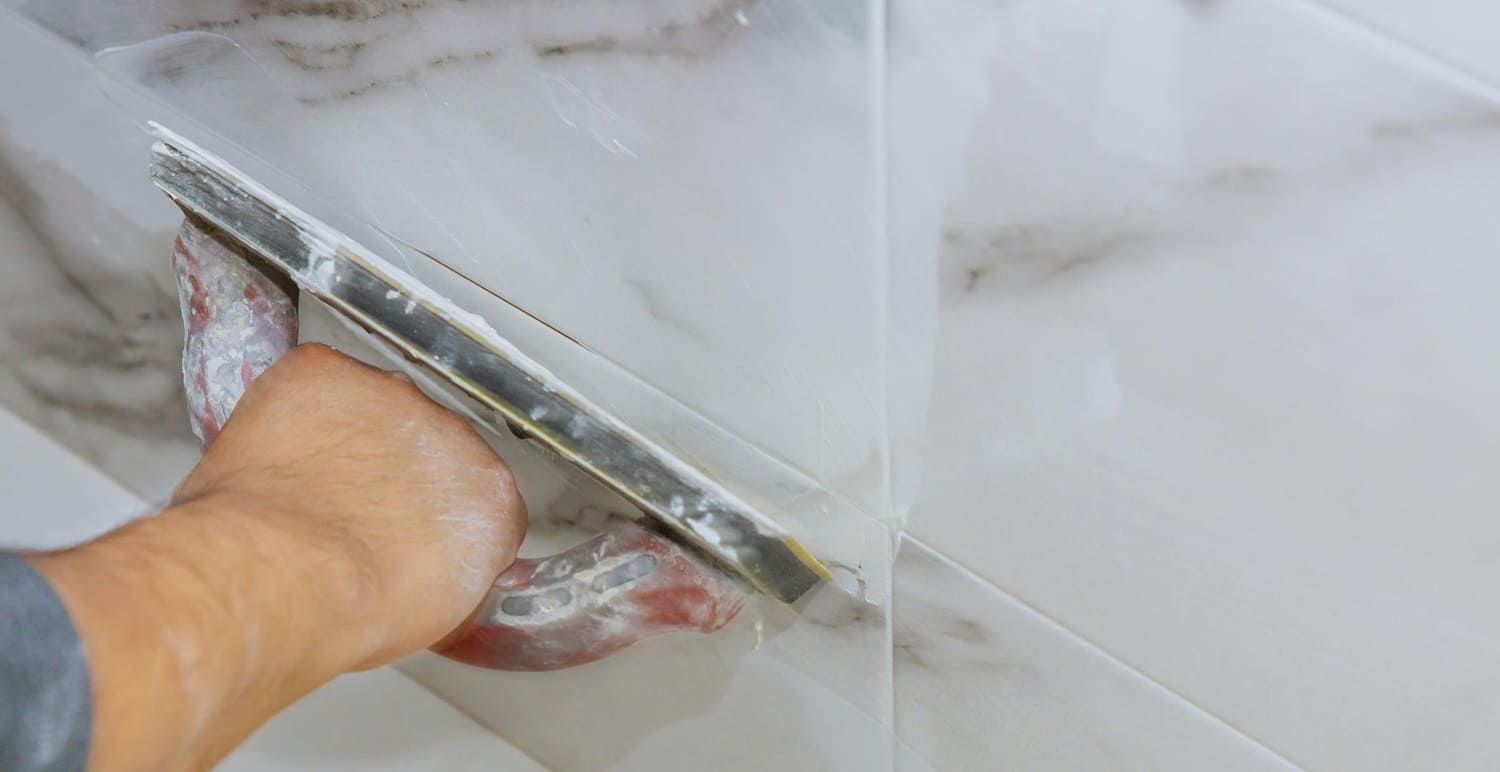How to Maintain and Clean Tile Floors with Sealers
Tile floors are a popular choice for many homeowners and businesses. They offer a blend of durability, aesthetics, and easy maintenance.
However, to keep them looking their best, regular maintenance is crucial. This includes cleaning, but also sealing.
Sealing your tile floors can protect them from stains and damage. It can also enhance their appearance, making them look new for longer.
But how do you go about maintaining and cleaning your tile floors with sealers? What are the best practices to follow?
In this article, we will guide you through the process. We'll cover everything from understanding different types of sealers to the actual sealing process, and post-sealing maintenance.
Whether you're a homeowner, a DIY enthusiast, or a professional cleaner, you'll find this guide useful.

Understanding Tile Floor Sealers
Tile floor sealers play a crucial role in tile floor maintenance. They form a protective layer on your tiles, shielding them from stains, damage, and wear.
Sealers can also enhance the look of your tiles. They can add a glossy finish, or deepen the color of your tiles.
But not all sealers are the same. They come in different types, each with its own set of properties and uses.
Here are some key points to remember about tile floor sealers:
- They protect your tiles from stains and damage.
- They can enhance the appearance of your tiles.
- There are different types of sealers, each suitable for different uses.
Types of Tile Floor Sealers
There are mainly two types of tile floor sealers: penetrating sealers and topical sealers.
Penetrating sealers seep into the pores of your tiles. They offer excellent protection without altering the look of your tiles.
Topical sealers, on the other hand, form a coating on the surface of your tiles. They can add a glossy or matte finish, but may not offer the same level of protection as penetrating sealers.
Choosing the Right Sealer for Your Tile
Choosing the right sealer for your tile is crucial. It depends on the type of tile you have, and the look you want to achieve.
For natural stone tiles, penetrating sealers are often the best choice. They protect the tiles without changing their appearance.
If you want to add a glossy finish to your tiles, a topical sealer would be a good choice. However, keep in mind that they may require more frequent reapplication.
Always read the manufacturer's instructions and do a small test patch before applying the sealer to your entire floor.
Pre-Sealing Tile Floor Preparation
Before you apply the sealer, your tile floor needs to be clean and in good condition. Any dirt or damage can affect the sealer's ability to adhere properly.
Start by sweeping or vacuuming the floor to remove loose dirt and debris. Then, mop the floor with a pH-neutral cleaner to remove any remaining dirt and grime.
Here are the steps to prepare your tile floor for sealing:
- Sweep or vacuum the floor.
- Mop the floor with a pH-neutral cleaner.
- Allow the floor to dry completely.
Cleaning Your Tile Floors
Cleaning your tile floors before sealing is crucial. Any dirt or grime left on the tiles can prevent the sealer from adhering properly.
Use a pH-neutral cleaner for this task. These cleaners are gentle on your tiles and won't damage the surface.
After cleaning, make sure to rinse the floor thoroughly. Any residue left from the cleaner can interfere with the sealer.
Repairing Damage Before Sealing
Inspect your tile floor for any damage before sealing. Look for cracks, chips, or loose tiles.
Small cracks and chips can be filled with a tile repair kit. Loose tiles should be reattached with a suitable adhesive.
Remember, a smooth and intact surface is key for the sealer to work effectively.
The Sealing Process: A Step-by-Step Guide
Sealing your tile floor is a straightforward process. However, it requires careful attention to detail to ensure a smooth and even finish.
Here's a step-by-step guide to sealing your tile floor:
- Apply the sealer evenly across the tile surface.
- Allow the sealer to penetrate the tile for the recommended time.
- Wipe off any excess sealer with a clean, dry cloth.
- Allow the sealer to dry and cure completely before walking on the floor.
Applying the Sealer
Start by pouring a small amount of sealer onto the tile floor. Use a paint roller or sponge to spread the sealer evenly across the surface.
Make sure to work in small sections. This allows you to control the application and ensure an even coat.
After applying the sealer, let it penetrate the tile for the recommended time. This time can vary depending on the type of sealer used.
Finally, wipe off any excess sealer with a clean, dry cloth. This prevents the sealer from drying on the surface and creating a hazy finish.
Drying and Curing Time
After applying the sealer, it's important to let it dry and cure completely. This can take anywhere from a few hours to a few days, depending on the sealer.
Avoid walking on the floor during this time. Foot traffic can damage the sealer before it's fully cured.
Once the sealer is dry, it's ready to protect your tile floor from stains and damage. Regular maintenance will help extend the life of the sealer and keep your floor looking its best.

Post-Sealing Maintenance
After sealing your tile floor, it's important to maintain it properly. This will help extend the life of the sealer and keep your floor looking its best.
Here are some tips for post-sealing maintenance:
- Clean your floor regularly with a pH-neutral cleaner.
- Wipe up spills immediately to prevent staining.
- Avoid using harsh chemicals or abrasive tools that can damage the sealer.
Remember, a well-maintained floor not only looks better, but it also lasts longer and is easier to clean.
Regular Cleaning and Care
Regular cleaning is key to maintaining your sealed tile floor. Use a pH-neutral cleaner to avoid damaging the sealer.
Sweep or vacuum your floor regularly to remove dirt and debris. This can scratch the surface of the tile and wear down the sealer over time.
For deeper cleaning, mop the floor with a damp mop. Avoid using too much water, as this can seep into the grout and cause damage.
When to Reseal Your Tile Floors
The frequency of resealing your tile floors depends on several factors. These include the type of sealer used, the amount of foot traffic, and the cleaning methods used.
As a general rule, most tile floors should be resealed every 1-2 years. However, heavily used areas may need to be resealed more often.
If you notice that water no longer beads up on the surface of the tile, it's time to reseal. This is a sign that the sealer is wearing off and the tile is no longer protected.
Common Mistakes and How to Avoid Them
Sealing tile floors is a straightforward process, but there are common mistakes that can compromise the results. Being aware of these can help you avoid them.
Here are some common mistakes to avoid:
- Not cleaning the floor thoroughly before sealing.
- Applying the sealer too thickly or unevenly.
- Not allowing enough drying time between coats.
By avoiding these mistakes, you can ensure a successful sealing process. This will result in a well-protected and aesthetically pleasing tile floor.
Conclusion: The Benefits of Proper Tile Floor Maintenance
Proper tile floor maintenance, including regular sealing, can extend the life of your floors. It can also enhance their appearance, making them a standout feature in your home or business.
In conclusion, investing time and effort in tile floor maintenance is a wise decision. It can save you money in the long run and keep your floors looking their best.
For more information about Clean & Seal and how it can benefit your Home Tile Floor, visit Oceancare Products Store website. Take the first step towards preserving your roof and safeguarding your Home Tile Floor with pre-treat cleaner, contact us today!


